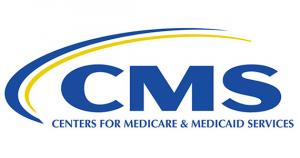BIG: Biden-Harris Admin proposes new standards for quality healthcare in Medicaid/CHIP

via the Centers for Medicare & Medicaid Services:
- Newly proposed standards and requirements would better ensure access to care, accountability, and transparency for Medicaid or CHIP services, including home and community-based services.
The Centers for Medicare & Medicaid Services (CMS) today unveiled two notices of proposed rulemaking (NPRMs), Ensuring Access to Medicaid Services (Access NPRM) and Managed Care Access, Finance, and Quality (Managed Care NPRM),that together would further strengthen access to and quality of care across Medicaid and the Children’s Health Insurance Program (CHIP), the nation’s largest health coverage programs. These rules build on Medicaid’s already strong foundation as an essential program for millions of families and individuals, especially children, pregnant people, older adults, and people with disabilities.
If adopted as proposed, the rules would establish historic national standards for access to care regardless of whether that care is provided through managed care plans or directly by states through fee-for-service (FFS). Specifically, they would establish access standards through Medicaid or CHIP managed care plans as well as transparency for Medicaid payment rates to providers, including hourly rates and compensation for certain direct care workers. The rules would also establish other access standards for transparency and accountability, and empower beneficiary choice.
“The Biden-Harris Administration has made clear where we stand: we believe all Americans deserve the peace of mind that having health care coverage brings,” said HHS Secretary Xavier Becerra. “We are proposing important actions to remove barriers to care, engage consumers, and improve access to services for all children and families enrolled in these critical programs. One in four Americans and over half of all children in the country are enrolled in Medicaid or CHIP – and the Biden-Harris Administration is committed to protecting and strengthening these programs for future generations.”
“Having health care coverage is fundamental to reducing health disparities, but it must go hand-in-hand with timely access to services. Connecting those priorities lies at the heart of these proposed rules,” said CMS Administrator Chiquita Brooks-LaSure. “With the provisions we’ve outlined, we’re poised to bring Medicaid or CHIP coverage and access together in unprecedented ways—a key priority that’s long overdue for eligible program participants who still face barriers connecting to care.”
Covering nearly one in four Americans and over half of all children in the country, Medicaid is the single largest health coverage program in the U.S. Medicaid and CHIP provide robust benefits with little to no out-of-pocket costs for over 92 million people. Many of those enrolled in Medicaid or CHIP come from underserved communities whose populations have disproportionately higher uninsured rates, and who often experience chronic health issues. Over 70 percent of people with Medicaid or CHIP coverage are enrolled in managed care plans. Ensuring families and individuals can find an in-network provider and access health care coverage in a timely way is a foundational principle of health equity, and a critical priority for the Biden-Harris Administration.
(As I noted yesterday, Medicaid/CHIP enrollment is actually even higher--likely around 95.6 million as of March 2023.)
Together, the Access NPRM and Managed Care NPRM include new and updated proposed requirements for states and managed care plans that would establish tangible, consistent access standards, and a consistent way to transparently review and assess Medicaid payment rates across states. The rule also proposes standards to allow enrollees to easily compare plans based on quality and access to providers through the state’s website. Other highlights from the proposed rules include:
- Establishing national maximum standards for certain appointment wait times for Medicaid or CHIP managed care enrollees, and stronger state monitoring and reporting requirements related to access and network adequacy for Medicaid or CHIP managed care plans, which now cover the majority of Medicaid or CHIP beneficiaries.
- Requiring states to conduct independent secret shopper surveys of Medicaid or CHIP managed care plans to verify compliance with appointment wait time standards and to identify where provider directories are inaccurate.
- Creating new payment transparency requirements for states by requiring disclosure of provider payment rates in both fee-for-service and managed care, with the goal of greater insight into how Medicaid payment levels affect access to care.
- Establishing additional transparency and interested party engagement requirements for setting Medicaid payment rates for home and community-based services (HCBS), as well as a requirement that at least 80 percent of Medicaid payments for personal care, homemaker, and home health aide services be spent on compensation for direct care workers (as opposed to administrative overhead or profit).
- Creating timeliness-of-access measures for HCBS and strengthening necessary safeguards to ensure beneficiary health and welfare as well as promote health equity.
- Strengthening how states use state Medical Care Advisory Committees, through which stakeholders provide guidance to state Medicaid agencies about health and medical care services, to ensure all states are using these committees optimally to realize a more effective and efficient Medicaid program that is informed by the experiences of Medicaid beneficiaries, their caretakers, and other interested parties.
- Requiring states to conduct enrollee experience surveys in Medicaid managed care annually for each managed care plan to gather input directly from enrollees.
- Establishing a framework for states to implement a Medicaid or CHIP quality rating system, a “one-stop-shop” for enrollees to compare Medicaid or CHIP managed care plans based on quality of care, access to providers, covered benefits and drugs, cost, and other plan performance indicators.



